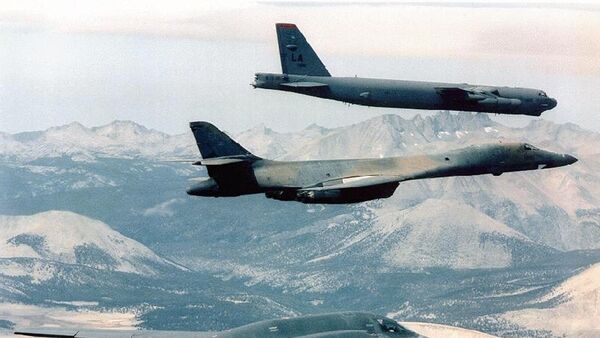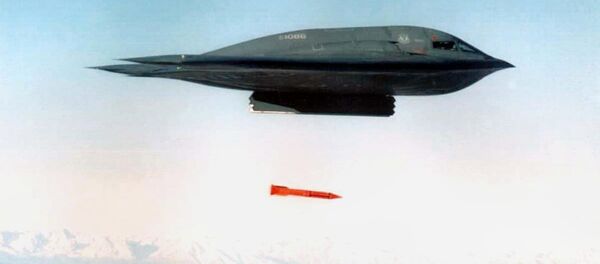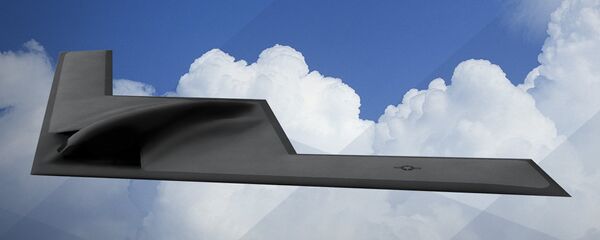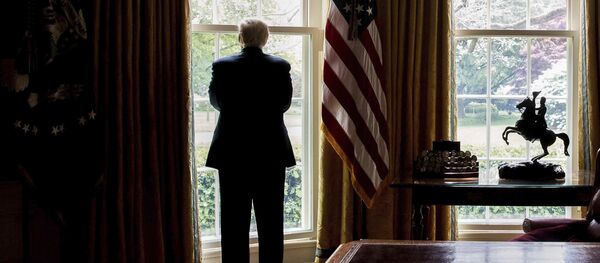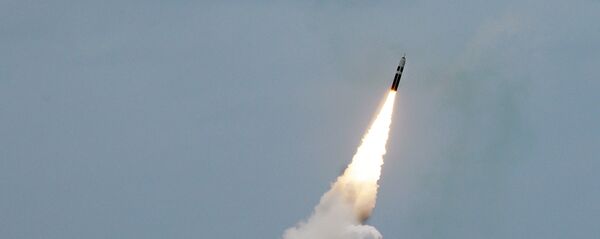The National Nuclear Security Administration (NNSA) is a semiautonomous office of the Department of Energy, overseen by the Under Secretary for Nuclear Security. They are tasked with the development, oversight and safety of the United States' arsenal of nuclear warheads.
The controversial new draft of the Nuclear Posture Review (NPR), a set of White House recommendations issued every eight years, calls for the construction or modification of low-yield nuclear warheads to attach to the US Navy's Trident submarine-launched ballistic missiles (SLBMs).
But the NNSA is already working on a life extension for the existing SLBM warhead, the W76-1, which has a medium-yield of 100 kilotons. In other words, they'll need to either modify the W76-1 or build a new SLBM from scratch.
The NPR also calls for a modification of the B61-12 thermonuclear gravity bomb that is used by the B-2 Spirit Stealth Bomber to strike underground targets. The NNSA also is working on the W80-4 warhead that is loaded into the US Air Force's air-launched cruise missile, and the W88, a high-yield SLBM.
Frank Klotz, who headed the NNSA from April 2014 until he retired on Friday, gave an exclusive interview to Defense News in which he warned of the NNSA's limitations as an agency and articulated his belief that they are already stretched as far as they can possibly go.
Klotz told Defense News that the scope of the new NPR was unprecedented. "We've never done more than one life extension program at a time, since the end of the Cold War. We're now doing essentially four," Klotz said.
"We're pretty much at capacity in terms of people, although we're hiring more. We're pretty much at capacity in terms of the materials that we need to do this work. And pretty much at capacity in terms of hours in the day at our facilities to do this work."
While he refused to comment on any of the projects directly, Klotz also hinted that the NPR may prove damaging to the US' nuclear readiness. "We are working pretty much at full capacity," he said. "And you can draw your conclusion from that."
The scope of the NPR has not been lost on military authorities, who have proposed ways to spread the workload across multiple organizations, including finding commonalities between the Air Force's new intercontinental ballistic missile, known as the Ground-Based Strategic Deterrent, and the Navy's Trident.
"There is merit in looking for areas in which we can achieve some commonality, whether it's the warhead or whether it's the missile or it's the missile guidance systems or fire-control system. Whatever it may be. It only makes sense," Klotz said.
But cooperation between different branches would provide its own challenges, he added. "When you get down into how you're going to pay for it, how are you going to schedule it into the work, what's the impact going to be on the other work that's being done? Those are the things you have to think about."
Klotz stressed that if the White House wants to modernize the US' nuclear arsenal, then the NNSA will require robust funding — to the tune of $350 billion over the next 30 years. That's not just to make new weapons and modernize the old, it's also to build new facilities and to ensure existing warheads are in working order via the Stockpile Stewardship Program.
But as Congressional funding must be spent on a year-by-year basis, he added, the funding must be doled out strategically. "You can't spend it all at the same time. 'No wine served before it's time.' We need our funds when we need our funds," he said. "So we need to think in terms of that."

